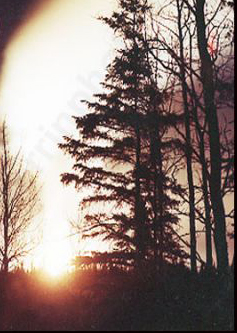 The subject of Rob Ford’s reaction to reporter Daniel Dale’s investigation of land adjacent to the Toronto mayor’s property has come up in conversation a lot the past week. Some acquaintances of mine have described Dale’s poking around Ford’s backyard wall as provocative. Others find the Toronto mayor’s behaviour embarrassing. But I was taken aback by one friend’s criticism of Dale’s newspaper.
The subject of Rob Ford’s reaction to reporter Daniel Dale’s investigation of land adjacent to the Toronto mayor’s property has come up in conversation a lot the past week. Some acquaintances of mine have described Dale’s poking around Ford’s backyard wall as provocative. Others find the Toronto mayor’s behaviour embarrassing. But I was taken aback by one friend’s criticism of Dale’s newspaper.
“That’s the ‘socialist’ Toronto Star for you,” he said.
In fairness, he did it just to get a rise out of me. And it worked. But more to the point, the Toronto Star is no more socialist than the National Post is reactionary. True, each has its stock of writers known for either their left-of-centre or their right-of-centre attitudes. But those writers are editorialists, assigned to offer interpretations of events of the day based on their hearts and their heads. They write columns based on years of experience having reported on a beat – whether education, the arts, science or politics. Editorialists editorialize.
In contrast, reporters report. Consequently, they uphold principles of the profession that go back hundreds of years. Among the tenets of journalism is serving the public interest – informing people so that they can make up their own minds. Reporters seek verification – in simple terms they seek out multiple witnesses.
They try to be fair, covering news impartially. Reporters try to distinguish between conjecture and fact. As much as possible they attribute their information to sources. And perhaps most important of all, reporters try to be original, not presenting someone else’s work as their own. I have always liked the definition of what a journalist does drafted by the former head of CBS news, Fred Friendly.
“A journalist is an explainer of complicated issues,” he once said. “Before he can explain, he must understand… And before he can do that, he most be predisposed to examine with equal parity, facts and personalities he dislikes as well as those he may support.”
None of that involves opinion, comment or either socialist or fascist doctrine. But what the job description often does demand, according to Friendly, is that journalists/reporters do a lot of searching. Good reporters search documents both written and online. They search what has been said before. They search for anomalies, things that look out of place or irregular.
They just get out there on foot and search the backwoods, back roads and, yes, back alleys. Snooping is Daniel Dale’s job. As Toronto Star editorialist Royson James aptly pointed out this week:
“(There isn’t) anything wrong with a reporter being a peeping Tom. It goes with the job. We are proud of such name-calling… It’s what we do.”

I offer one of my own experiences as both an explanation of the job description as well as the proof of the value of the practice. Back in October 1982, a gas well (owned and operated by the U.S. oil company Amoco) southwest of Edmonton experienced a blowout.
People near the well (outside Lodgepole, Alta.) were relocated. The area was cordoned off. And nobody – least of all reporters – was allowed access to the well site. CBC Radio wanted the story covered. I offered my services. When I got to Lodgepole, I immediately searched out an Amoco public relations officer.
“There’s no danger to the public,” she said. “Everything’s under control. And we have a contingency if anything happens.” And she ended the interview there.
At the municipal office, I approached the town administrator.
“There’s no danger to the public,” he said. “Everything’s under control. And we have a contingency if anything happens.” And he took no further questions. When I got to the local RCMP detachment, you can guess what answer I got from the officer in charge. Ditto.
I was beginning to think I was trapped in an episode of “Twilight Zone.” I was worried I’d have nothing for my radio report. Then I bumped into an air-quality monitoring crew from the Alberta environment department. They allowed me to record their air pollution readings, which indicated the sour gas escaping from the well was powerful enough to turn house exteriors yellow and too toxic for humans within several kilometres.
However, my real breakthrough on the story occurred when I ambushed a mud-compacting crew, recently arrived from the West Coast. They had seen the site, but hadn’t been told by Amoco what to say. They were about to check into a motel I’d staked out and I asked them to describe the well site.
“It’s a mess,” one of the crewmen said. “Like a lunar wasteland.”
And I had my story, much to Amoco’s chagrin and my producer’s delight. Not that the object of the effort was to tarnish the oil company’s reputation. It had done that on its own. My point is, whether there’s a cover-up or not, whether there’s culpability or not, if the public has the right to know (and Canada has enshrined that in its constitution), then it’s a reporter’s job to facilitate that right.